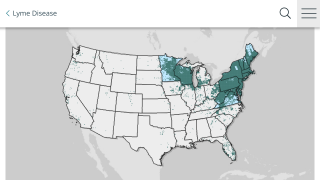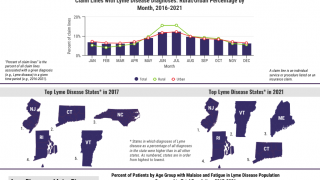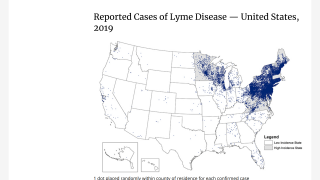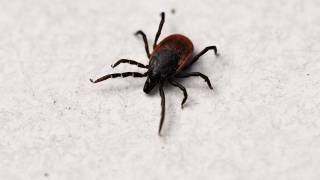More Women Suffering From Lyme Disease

A new study reported women are the most impacted by Lyme disease in the United Kingdom.
And, this study published on August 15, 2019, found children and seniors should be more aware of the risks of contracting Lyme disease.
The study which examined data on 2,361 hospital patients collected between 1998 and 2015, also found new Lyme disease cases peaked during August each year.
This study’s findings are important as they may help target healthcare promotion messages to at-risk patients.
Out of all identified cases, 1,005 (60.1%) were women or girls, with peaks of new cases at the ages between 6 and 10, and 61 and 65 years of age.
These researchers said, ‘These data display a predominance of female cases of certain age groups. The reasons for this are hard to explain, but could be related to differences in health-seeking behavior between women and men and increased exposure to tick habitats due to leisure activities in children and older people, as opposed to occupational exposure in younger adults.’
‘Being aware of the signs and symptoms of Lyme disease is important so that patients can receive early diagnosis and treatment from their family doctor.’
‘Lyme disease symptoms typically develop up to 3-weeks after being bitten by a tick and include a spreading circular red rash or flu-like symptoms.’
Furthermore, a previous study reported the UK may have a significantly larger Lyme disease outbreak than previously assumed.
This study published in BMJ on July 30, 2019, found the incidence of Lyme Disease in the UK is about 3 times greater than previous estimates.
This means UK residents are at an increased risk for Lyme disease.
Additionally, these results should motivate health officials to increase awareness of the need for Lyme disease preventive measures.
Moreover, a greater awareness of Lyme disease risks may also lead to more rapid diagnosis and treatment which is important to prevent long-term morbidity.
Recently, the US Centers for Disease Control and Prevention (CDC) issued new recommendations for a 2-tier test for Lyme disease diagnosis.
On August 15, 2019, the CDC said in the Morbidity and Mortality Weekly Reports (MMWR) ‘when cleared by the Food and Drug Administration (FDA), serologic assays that utilize enzyme immunoassay (EIA) rather than western immunoblot assay in a two-test format are acceptable alternatives for the laboratory diagnosis of Lyme disease.
Additionally, clinicians and laboratories should consider serologic tests cleared by the FDA as CDC-recommended procedures for Lyme disease serodiagnosis.
Furthermore, this MMWR said on July 29, 2019, ‘the FDA cleared several Lyme disease serologic assays with new indications for use based on a modified two-test methodology. The modified methodology uses a second EIA in place of a western immunoblot assay.’
‘Clearance by FDA of the new Lyme disease assays indicates that test performance has been evaluated and is "substantially equivalent to or better than' a legally marketed predicate test.’
>> Fast Lyme Disease Testing <<
The CDC estimates around 300,000 new cases of Lyme disease per year in the US. In 2017, a total of 42,743 confirmed and probable cases of Lyme disease were reported to CDC, which is 17 percent more than in 2016.
The geographic distribution of high incidence areas with Lyme disease appears to be expanding based on data reported to the National Notifiable Disease Surveillance System (NNDSS).
Our Trust Standards: Medical Advisory Committee
























